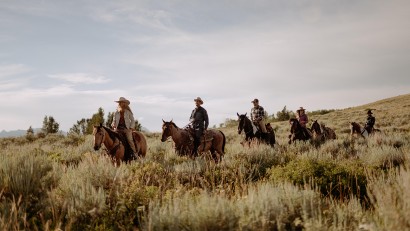- 1. Key Takeaways
- 2. Kuhl’s Top Rocky Mountain National Park Hikes
- 2.1. 1. Emerald Lake
- 2.2. 2. Dream Lake
- 2.3. 3. The Loch
- 2.4. 4. Alpine Ridge Trail
- 2.5. 5. Gem Lake
- 2.6. 6. Alberta Falls
- 2.7. 7. Bear Lake Loop
- 2.8. 8. Mills Lake
- 2.9. 9. Sky Pond
- 2.10. 10. Deer Mountain
- 2.11. 11. Continental Divide Trail
- 2.12. 12. East Inlet Trail
- 2.13. 13. Longs Peak
- 2.14. 14. Ute Trail
- 2.15. 15. Chasm Lake
- 3. What to Bring on Your RMNP Hikes
- 4. Tips for Hiking in Rocky Mountain National Park
- 5. Final Thoughts
- 6. FAQs
- 6.1. What are the best months for hiking Rocky Mountain National Park?
- 6.2. Which side of Rocky Mountain National Park is best?
- 6.3. Where do I stay if I’m hiking in Rocky Mountain National Park?
- 6.4. Where is the best place to enter Rocky Mountain National Park?
- 6.5. What is the least busy day at Rocky Mountain National Park?
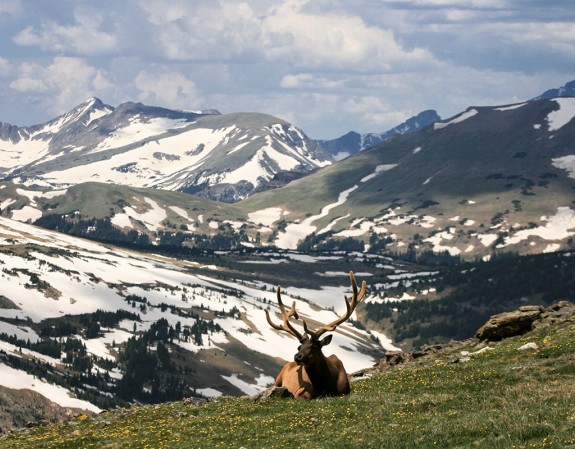
Best Hikes in Rocky Mountain National Park
Table of Contents [Show]
If you’re planning a trip to the Colorado Rockies, you can’t skip the best hikes in Rocky Mountain National Park (RMNP). This alpine wonderland is home to a vast array of Rocky Mountain trails that will satisfy every level of hiker, from those looking for treacherous, steep climbs with sweeping views to family-friendly strolls surrounded by stunning scenery. Aside from hiking, there are plenty of other things to do in Rocky Mountain National Park, including wildlife watching, horseback riding, and camping. Before heading out, make sure you have everything you need on our camping checklist or backpacking checklist. You’ll love visiting these must-do hikes in Rocky Mountain National Park.
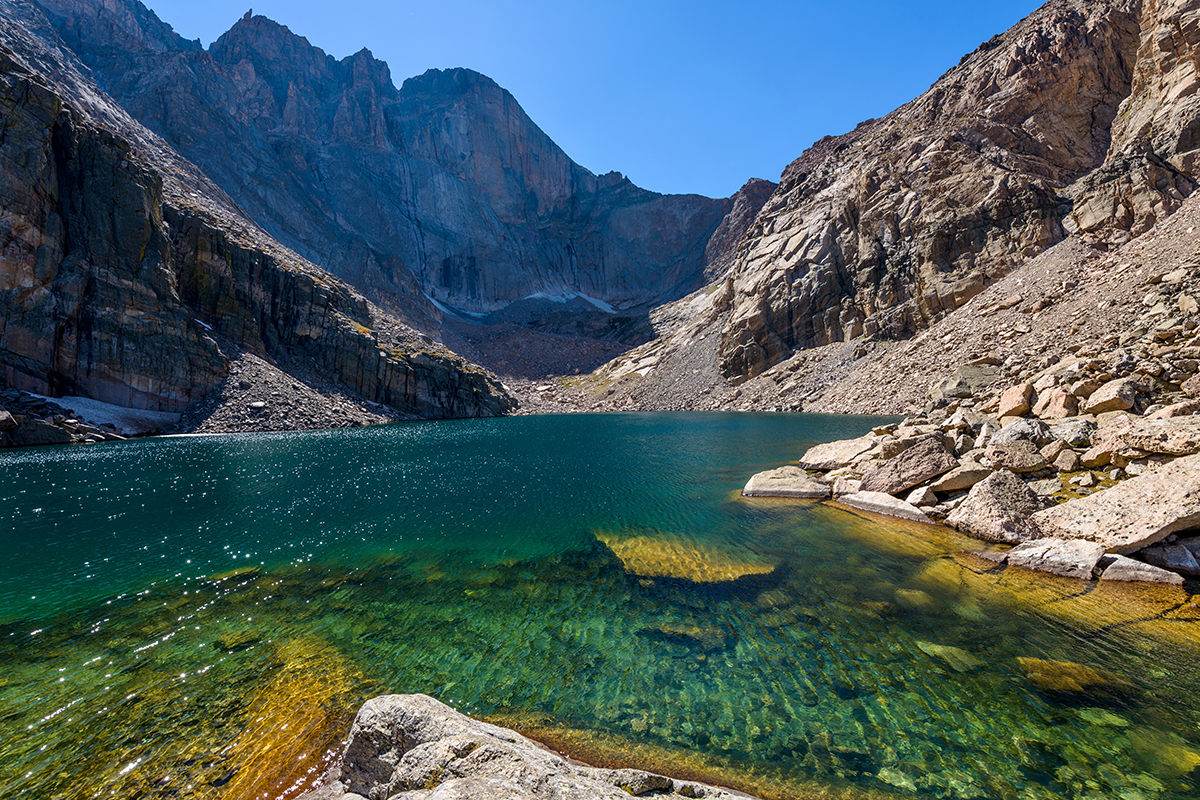
Key Takeaways
- Rocky Mountain National Park is the highest national park by average elevation in the United States, with 60 peaks over 12,000 feet. The park’s highest point is Longs Peak, at 14,259 feet.
- Celebrated as one of the country’s top hiking destinations, more than 350 miles of Rocky Mountain National Park trails meander through stunning and diverse natural terrain, including the historic Continental Divide.
- The park encompasses 100+ stunning alpine lakes, the most popular of which is Bear Lake due to its easy access. However, because of the ice-cold water temperatures at such high altitudes, people typically don’t go swimming.
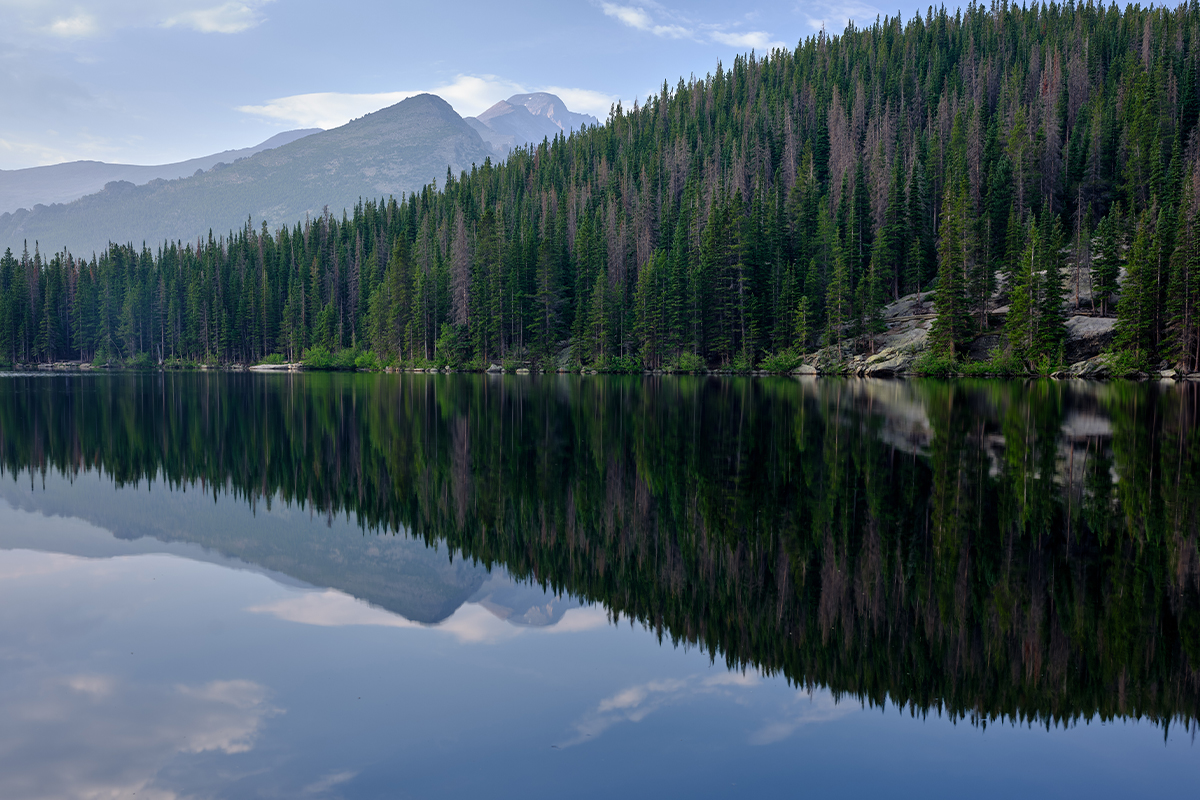
Kuhl’s Top Rocky Mountain National Park Hikes
Rocky Mountain National Park is home to some of the most stunning hikes in the country, with crystal clear alpine lakes, picturesque mountain peaks, and a thriving mountainous ecosystem filled with wildlife, including bears, moose, bobcats, and more. Here are some of the top hikes in Rocky Mountain National Park.
1. Emerald Lake
Difficulty: Easy
Length: 3.2 miles
Elevation Gain: 702 feet
The hike to Emerald Lake is one of the best easy hikes in Rocky Mountain National Park, starting at the Bear Lake Trailhead. This popular 3.2-mile round-trip hike has an elevation gain of 698 feet. The trail is rated as easy to moderate and passes Nymph Lake and Dream Lake before reaching Emerald Lake. The destination offers stunning views of the lake surrounded by dramatic mountain peaks.
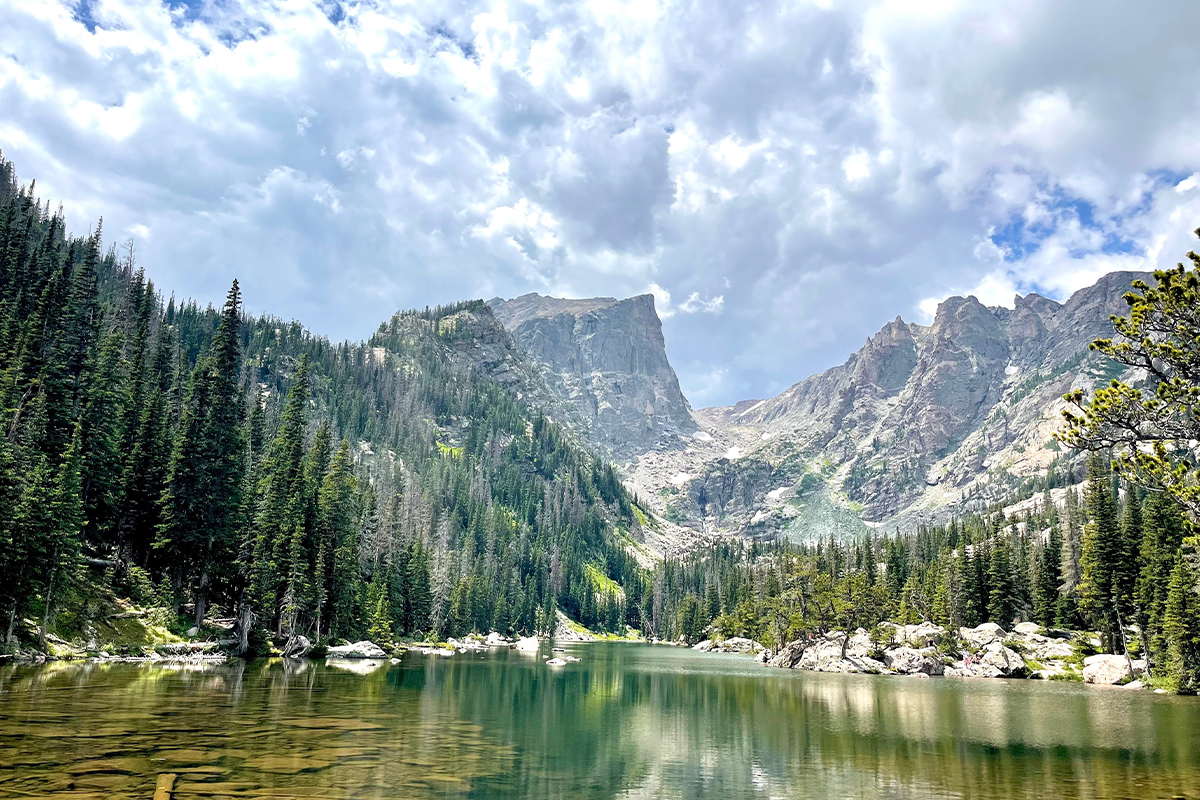
2. Dream Lake
Difficulty: Easy
Length: 2.0 miles
Elevation Gain: 459 feet
The Dream Lake trail also begins at the Bear Lake Trailhead. This family-friendly 2.2-mile round-trip hike, with an elevation gain of 450 feet, offers picturesque views of Dream Lake, Hallett Peak, and Flattop Mountain.
3. The Loch
Difficulty: Moderate to difficult
Length: 5.4 miles
Elevation Gain: 1,062 feet
Starting from the Glacier Gorge Trailhead, the hike to The Loch is a 5.4-mile round trip with an elevation gain of just over 1,000 feet. This moderately difficult hike features scenic waterfalls and lush forests and eventually opens up to the beautiful alpine lake known as The Loch, with its clear waters and surrounding peaks. Many consider this one of the best moderate hikes in Rocky Mountain National Park.
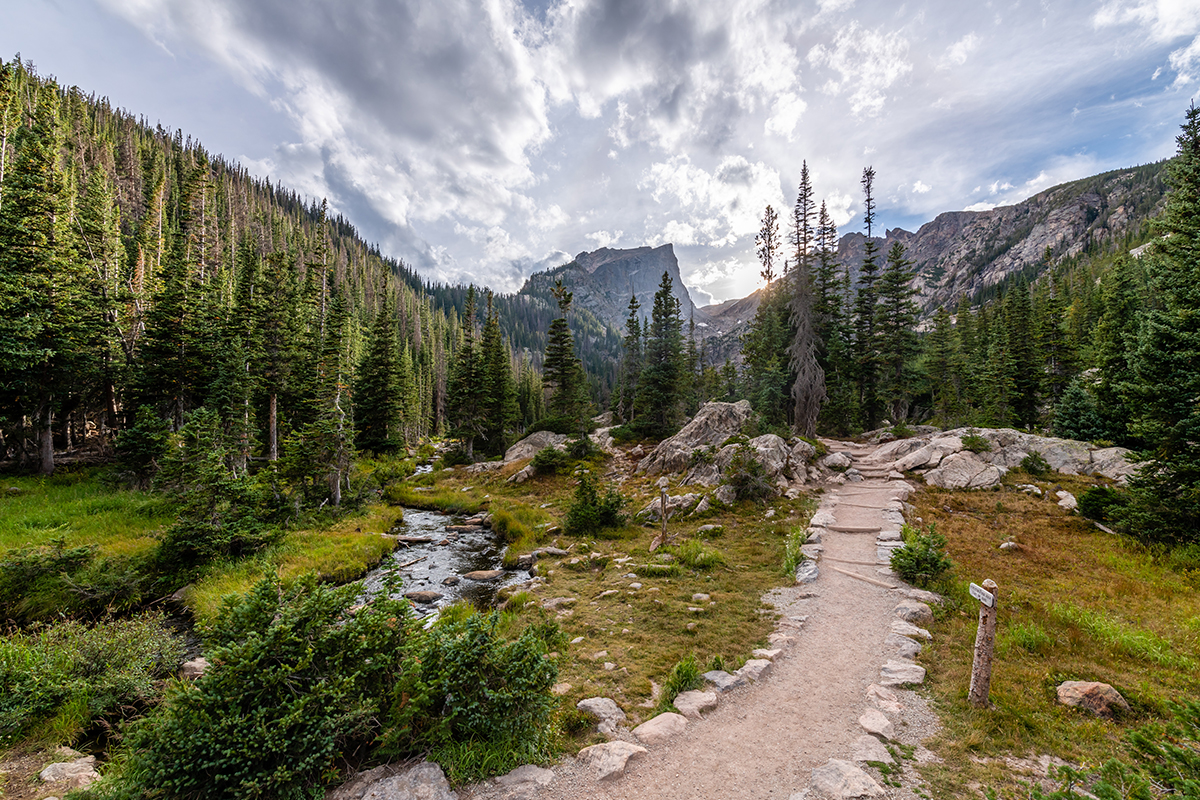
4. Alpine Ridge Trail
Difficulty: Easy
Length: 0.6 miles
Elevation Gain: 134 feet
The Alpine Ridge Trail is short but steep and near the Alpine Visitor Center. It is a 0.6-mile round trip with an elevation gain of about 200 feet. Due to its high starting altitude of around 12,000 feet, it can feel more challenging for inexperienced hikers and those sensitive to high altitude. The trail offers breathtaking panoramic views of the surrounding mountain ranges.
5. Gem Lake
Difficulty: Moderate
Length: 3.2 miles
Elevation Gain: 987 feet
The Gem Lake trail starts at the Lumpy Ridge Trailhead. This 3.4-mile round-trip hike has an elevation gain of 1,000 feet and features unique rock formations and stunning views of Estes Park and the surrounding mountains before reaching the small, scenic Gem Lake.

6. Alberta Falls
Difficulty: Easy
Length: 1.6 miles
Elevation Gain: 226 feet
The trail to Alberta Falls starts from the Glacier Gorge Trailhead. It is a relatively easy 1.6-mile round-trip hike with an elevation gain of 200 feet. This popular hike leads to a picturesque waterfall, making it one of the quickest yet most rewarding hikes in Rocky Mountain National Park.
7. Bear Lake Loop
Difficulty: Easy
Length: 0.7 miles
Elevation Gain: 49 feet
The Bear Lake Loop is an easy, 0.7-mile trail with minimal elevation gain, starting at the Bear Lake Trailhead. It is one of the best hiking trails in Rocky Mountain National Park for families, as it is flat and accessible and offers beautiful views of the lake and surrounding mountains.
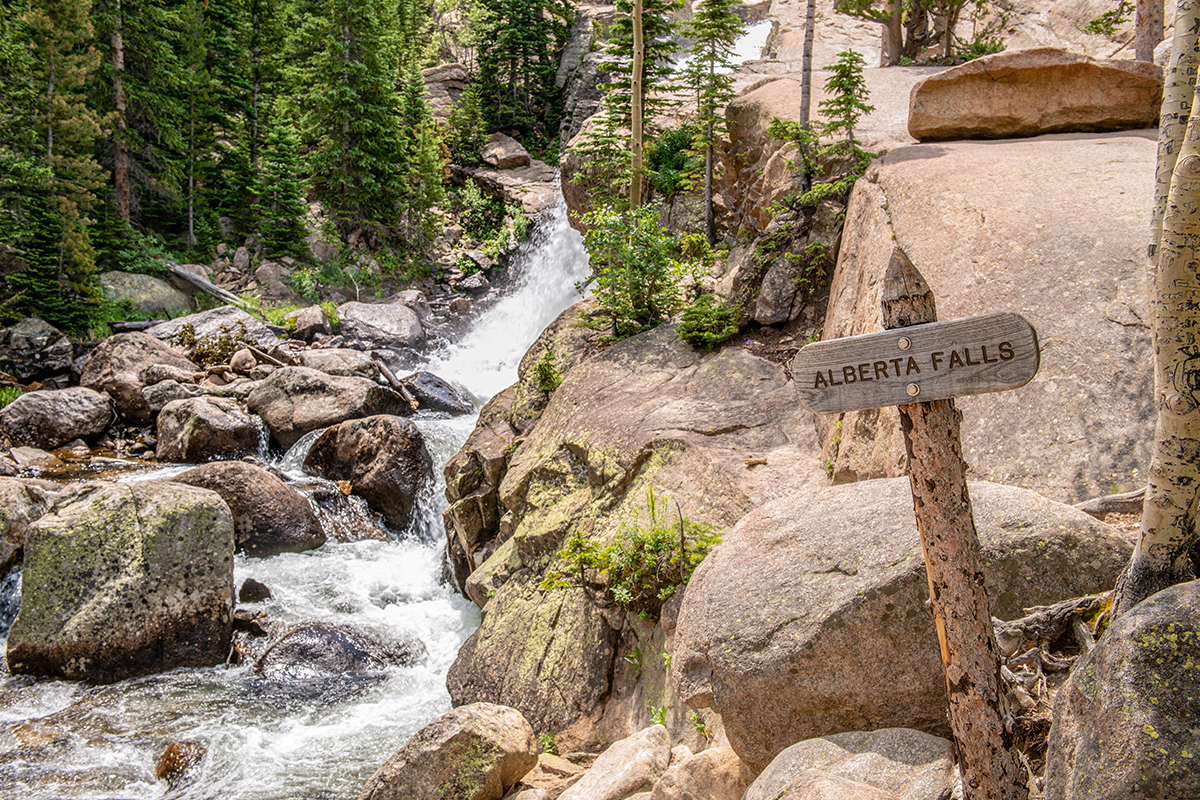
8. Mills Lake
Difficulty: Moderate
Length: 5.2 miles
Elevation Gain: 826 feet
The hike to Mills Lake begins at the Glacier Gorge Trailhead. This is a 5.3-mile round-trip hike with an elevation gain of 700 feet, rated as moderate. The hike passes Alberta Falls and follows Glacier Creek, leading to the serene Mills Lake, framed by dramatic peaks.
9. Sky Pond
Difficulty: Hard
Length: 8.6 miles
Elevation Gain: 1,774 feet
Starting at the Glacier Gorge Trailhead, the hike to Sky Pond is a challenging 8.4-mile round trip with an elevation gain of 1,800 feet. The trail passes Alberta Falls, The Loch, and Timberline Falls before reaching Sky Pond. The final ascent involves a steep scramble, but the stunning alpine scenery at Sky Pond is well worth the effort.
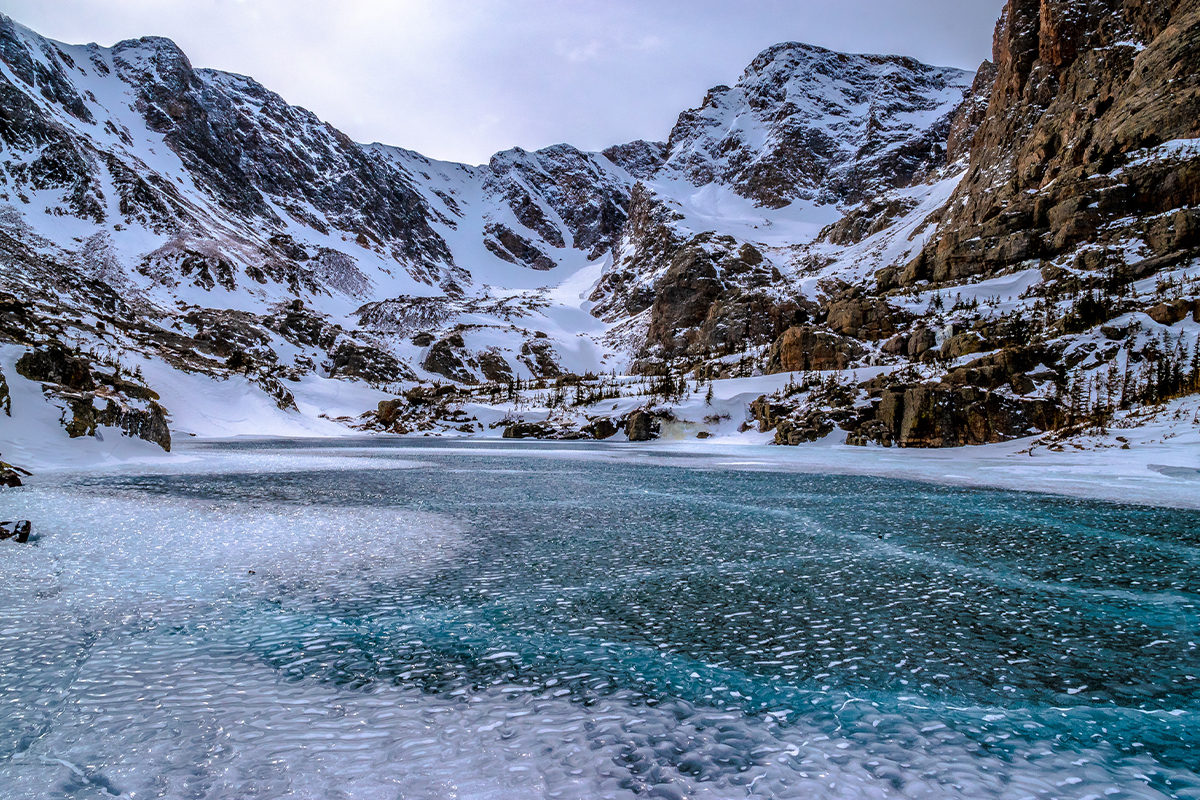
10. Deer Mountain
Difficulty: Moderate
Length: 6.0 miles
Elevation Gain: 1,394 feet
The Deer Mountain trail starts at the Deer Ridge Junction Trailhead. This moderate hike is a 6.2-mile round trip with an elevation gain of 1,210 feet. The summit of Deer Mountain offers rewarding panoramic views of the surrounding peaks and valleys.
11. Continental Divide Trail
Difficulty: Challenging
Length: 45 miles
Elevation Gain: 4,192 feet
The Continental Divide Trail passes through Rocky Mountain National Park, offering various segments for hikers to explore. This trail is part of a long-distance hiking route stretching from Canada to Mexico. This trail offers challenging terrain and stunning views of the Continental Divide. One popular, challenging route is from Milner Pass to Bear Lake, which covers 16 miles and has an elevation gain of 4,192 feet. However, hikers are welcome to “choose their own adventure” and turn around at any point they please for a shorter, more tolerable day hike. The Continental Divide Loop is 45 miles long and is popular for Rocky Mountain National Park backpacking.
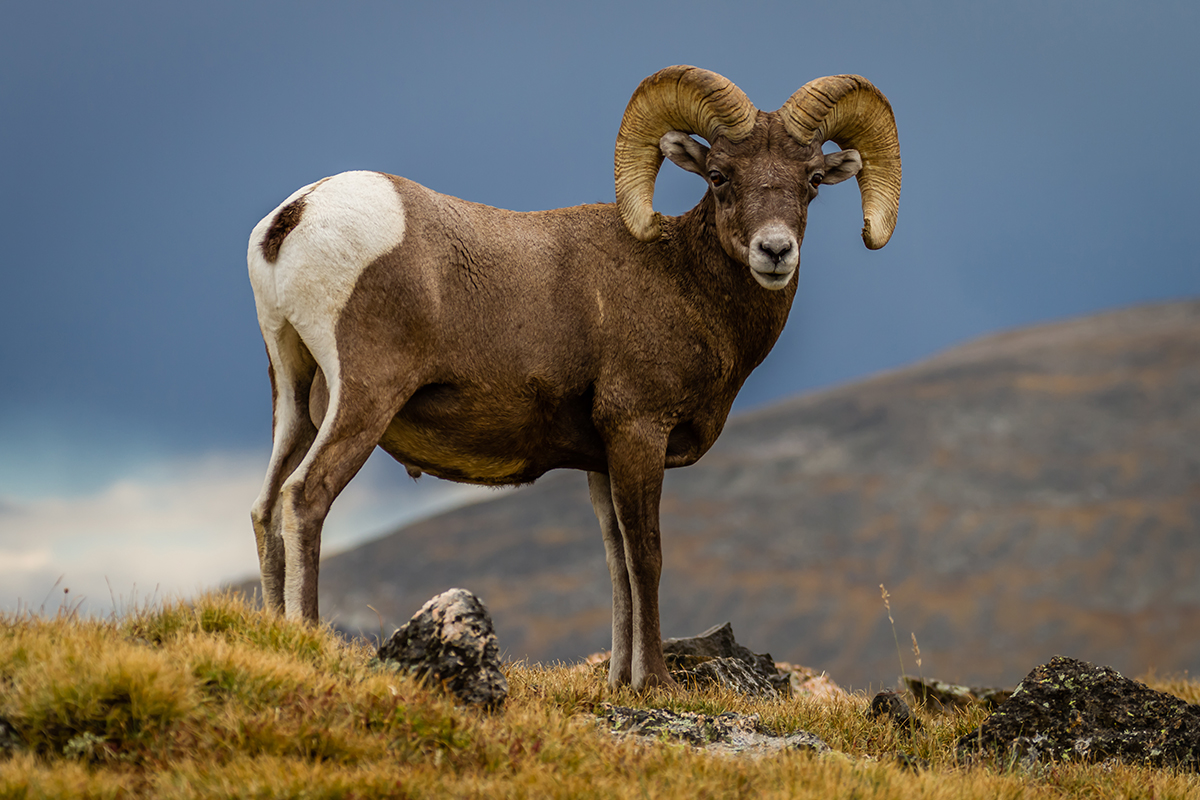
12. East Inlet Trail
Difficulty: Hard
Length: 18 miles
Elevation Gain: 2,910 feet
The East Inlet Trail starts near Grand Lake and offers a variety of hiking options. It is 18 miles long, but you can turn around wherever you please. A popular segment is the hike to Lone Pine Lake, about an 11-mile round trip with an elevation gain of 1,600 feet. The trail passes Adams Falls and meanders through beautiful meadows and forests, offering stunning mountain views.
13. Longs Peak
Difficulty: Hard
Length: 13.3 miles
Elevation Gain: 4,934 feet
The Keyhole Route along Longs Peak Trail is one of the top hikes in Rocky Mountain National Park. It is a strenuous 14.5-mile round-trip hike with an elevation gain of 5,100 feet and is only for experienced hikers as it involves scrambling and exposure to heights. The summit offers unparalleled views but requires careful planning and preparation, so be prepared.
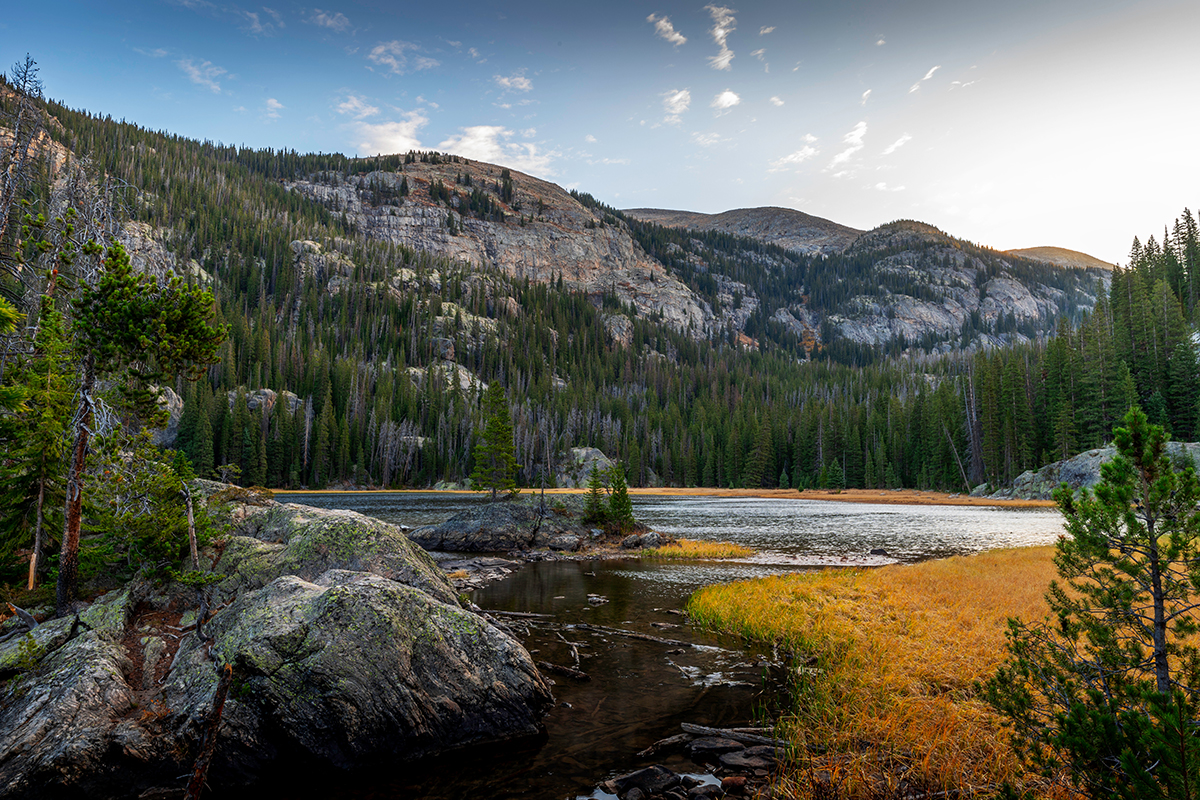
14. Ute Trail
Difficulty: Moderate
Length: 8 miles
Elevation Gain: 1,200 feet
The Ute Trail starts at Milner Pass and offers a relatively easy high-altitude hike. The trail can be an out-and-back hike or a point-to-point hike to the Alpine Visitor Center. The distance varies, but a common route is about 8 miles round trip with minimal elevation gain, offering expansive views of the alpine tundra.
15. Chasm Lake
Difficulty: Hard
Length: 8.0 miles
Elevation Gain: 2,552 feet
The Chasm Lake trail starts at the Longs Peak Trailhead and is a challenging 8.4-mile round-trip hike with an elevation gain of 2,450 feet. The trail offers stunning views of Longs Peak and leads to the beautiful Chasm Lake, nestled at the base of the peak. The hike includes steep sections and rocky terrain, making it suitable for more experienced hikers.
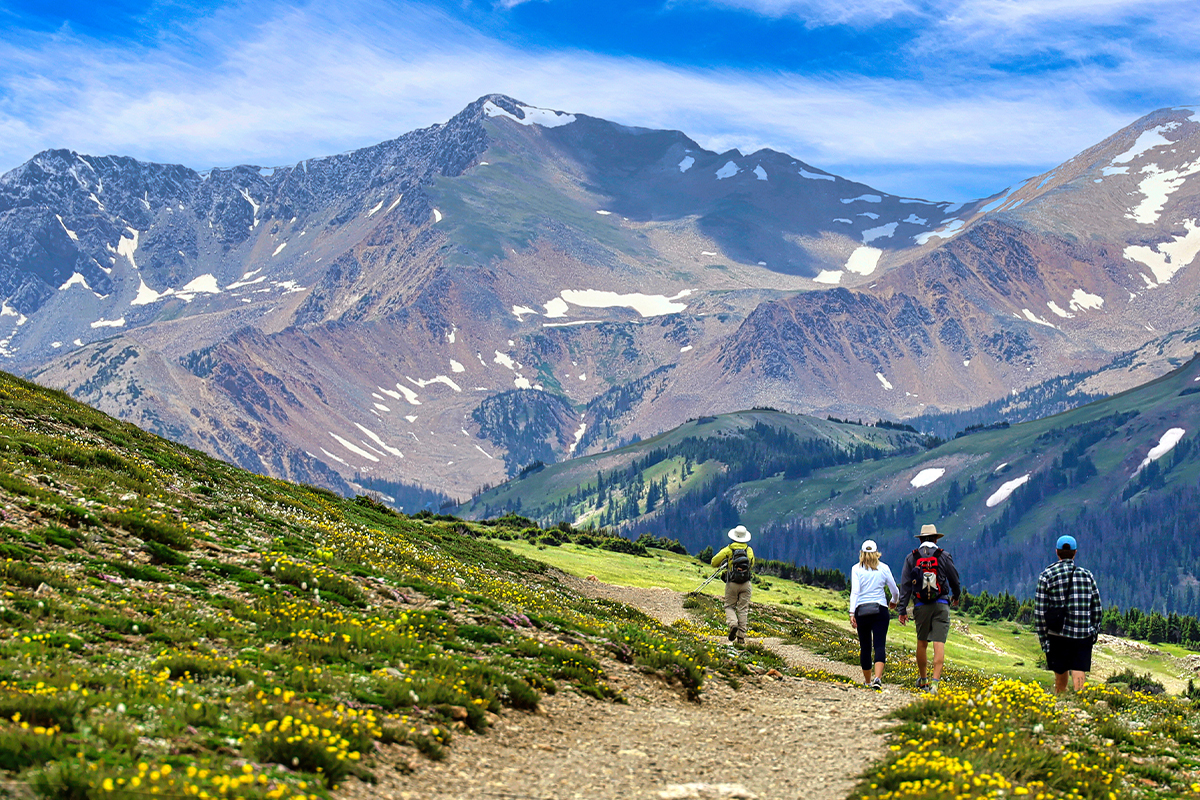
What to Bring on Your RMNP Hikes
Like many mountainous climates across the U.S., the weather in the Rockies is unpredictable. It varies from season to season, with freezing, snowy winters and hot, clear summers with frequent afternoon thunderstorms. Regardless of the season, we recommend dressing in layers and considering the varying temperatures at different elevations. During the summer, we strongly recommend bringing bug spray and a raincoat. During the winter, you’ll need to bundle up with snow jackets, gloves, and winterized boots as average temperatures can fall as low as 10° F. Other items you’ll want to consider bringing while on RMNP hikes include bear spray, plenty of water, and a first-aid kit. See our first-aid checklist.
For comfortable, stylish clothing perfect for Rocky Mountain National Park trails, browse our women’s hiking clothing and men’s outdoor wear.
Tips for Hiking in Rocky Mountain National Park
This national park is known for its high peaks and temperamental weather, so hikers should be prepared before setting out on their adventure. Here are our top tips for hiking in Rocky Mountain National Park.
- Adjust to the altitude: With elevations ranging from 7,500 to 14,000 feet, high altitude can cause headaches, fatigue, dizziness, and nausea in those who haven’t properly adjusted.
- Be prepared for variable weather: Rocky Mountain National Park is known for its temperamental weather, from summer afternoon thunderstorms to massive winter snow dumps. Check the forecast before you head out, dress in layers, and be prepared for the unexpected.
- Keep a safe distance from wildlife: You’ll find tons of wildlife in the park, including moose, bears, elk, bobcats, mountain lions, and more. Do not approach animals, and be aware of wildlife safety protocols.
- Know your limits: If you opt for a strenuous trail, listen to your body if you feel tired or unwell. It’s better to end the hike early than risk your safety.
- Pack properly: Carry a map, compass, first-aid kit, plenty of water, and high-energy snacks. Trekking poles can also be helpful for stability on rugged terrain.
- Visit the park's west side for fewer crowds: The park’s west side sees far fewer visitors due to its distance from the famous Estes Park, but it still offers stunning views, peaceful trails, and ample opportunities to spot wildlife.

Final Thoughts
Rocky Mountain National Park is a hiker's haven, and its endless trails are a great way to explore the outdoors regardless of your fitness level. Whether you're seeking a gentle stroll around Bear Lake or a challenging climb up Longs Peak, the park's diverse landscapes and breathtaking views will not disappoint. Each RMNP hike presents a unique opportunity to connect with nature, spot wildlife, and enjoy the serene beauty of the Rockies.
If you have more time after visiting Rocky Mountain National Park, consider traveling less than two hours by car to Boulder and Denver for even more outdoor adventure. Check out our favorite Boulder hikes and the best hikes near Denver.
Featured image by: Blanscape.
FAQs
What are the best months for hiking Rocky Mountain National Park?
The best months for hiking in Rocky Mountain National Park are June through September. During this period, hikes are typically snow-free, and the weather is pleasant, making it ideal for exploring the park's stunning landscapes, wildflowers, and abundant wildlife.
Which side of Rocky Mountain National Park is best?
The east side of Rocky Mountain National Park, accessible from Estes Park, is often considered the best due to its diverse hikes, spectacular alpine scenery, and convenient amenities. It offers iconic hikes like the Bear Lake Loop and stunning Trail Ridge Road access.
Where do I stay if I’m hiking in Rocky Mountain National Park?
Consider lodging in Estes Park for a convenient and comfortable stay while hiking Rocky Mountain National Park. This charming town offers a variety of accommodations, from cozy cabins to luxurious hotels, and provides easy access to the park's east entrance and numerous trailheads. Another great option is camping or backpacking inside the park and enjoying its vast, high, rocky nature scenes overnight.
Where is the best place to enter Rocky Mountain National Park?
The best place to enter Rocky Mountain National Park is the Beaver Meadows Entrance near Estes Park. This gateway provides direct access to popular hikes, visitor centers, and scenic drives, making it an ideal starting point for your adventure in the park.
What is the least busy day at Rocky Mountain National Park?
Wednesdays are typically the least busy day at Rocky Mountain National Park. Visiting midweek allows you to avoid the weekend crowds, providing a more tranquil experience on the hikes and at popular viewpoints, enhancing your overall enjoyment of the park's natural beauty.


